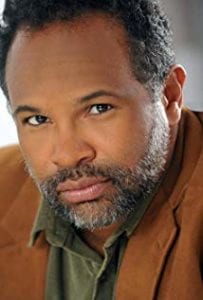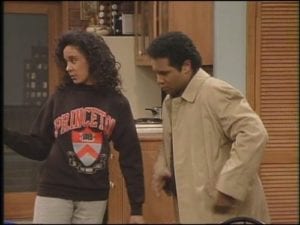It's a living: Surviving as a creative artist in an expensive city
by Agunda Okeyo | October 8, 2018 7:00 am
Last month former Cosby Show actor Geoffrey Owens was spotted working the register at a Trader Joe’s in New Jersey. Although the woman who posted the picture now regrets it, her and others’ attempts to ridicule the veteran actor transformed into cheers of support for Owens.

In our money-obsessed and celebrity-driven society, some saw that as a “gotcha” moment because God forbid an artist has to work a non-glamorous job. To his credit, Owens, who played Elvin on the show, took the newfound attention as an opportunity to talk about the dignity of work. In an interview on ABC with Robin Roberts, he said “I hope what doesn’t pass [is] this rethinking of what it means to work… Every job is worthwhile and valuable.”
As a self-employed creative in New York, I certainly empathize with Owens from my life experience of charting my dreams in a city that is getting only more and more expensive. In a city that once was synonymous with art, activism and affordable living, New York has become unrecognizable.
According to the 2018 “Out of Reach” report from the National Low Income Housing Coalition, New York State has the nation’s fourth highest “housing wage.” A minimum-wage employee would need to work 115 hours a week to be able to afford a two-bedroom apartment. Minimum wage in the state is $10.40 – more than $3 more than the federal minimum of $7.25 – but in New York City, you’d need to earn $34.40 per hour to afford.
From exorbitant housing to expensive transportation to the overall cost of living, NYC has transformed into a city that no longer sees honor or dignity in the working person because they can barely afford to live here anymore.
I originally wrote about the topic of unaffordable living in NYC in 2013. As a native New Yorker, I have witnessed the breakneck speed of gentrification, which has swallowed the city whole since the early aughts. I remember attending community board meetings or public conversations on the issue of affordable housing and hear everyday folks yelling and pounding their feet about the coming tide.
Without being hyperbolic, life in New York today feels like an echo of the 19th century’s Manifest Destiny, when settlers felt it was their right and duty to go West, expand into land that was already occupied by native and indigenous people. The lack of affordable housing feels like violence, instigated by the city’s self-appointed kings: Real estate developers.

It’s not just renters who suffer. New York has hundreds of empty commercial spaces across the city, because landlords boot out mom-and-pop commercial tenants using preposterous rent increases that only corporate franchises can afford. It’s common to walk by several empty buildings on your way to and from home, making the landscape eerily hollow and unfamiliar. Residential rents have also skyrocketed with New York City consistently ranked as the second, most expensive place to to live in America after San Francisco – another city seized by rampant gentrification and inequality.
Then, there’s the cost of transportation. When I was growing up, the subway and bus system was affordable for all residents. I see the subway and buses as an overt reflection of American democracy, where one is free to travel without great expense, employment opportunities are therefore vast, and interaction with folks of different walks of life is possible.
The price of a single-ride subway fare has increased faster than the rate of inflation, from $1.50 in 2003 to $2.75 today. Meanwhile, exhorbitant construction costs and delayed maintenance plague the 100-year-old Metropolitan Transportation Authority, causing chronic delays and breakdowns for riders. Who is to blame? “Public officials have stood by as a small group of politically connected labor unions, construction companies and consulting firms have amassed large profits,” The New York Times reported after a 2017 investigation into MTA’s problems.
But in the end, it’s the riders who suffer. Things have gotten so bad that it’s common for folks to wait outside the subway turnstiles and ask those with unlimited metrocards to “swipe it forward.” For several years now, activists have advocated for this practice since many simply cannot afford to ride the train otherwise. Still, the metro authority is planning two more fare hikes, one in 2019 and the other in 2021.
Many of the newer residents fail to recognize that in December, the average daily population at the city’s homeless centers hit a record – at more than 63,000. The city tops the nation with 76,000 people without a home. Myself and any New Yorker with eyes has seen panhandlers explode in number on the streets and in the subways. It’s very common to enter a train car to hear several memorized pitches from homeless people making their case for $1 or 50 cents. Veterans, mothers and children, the mentally ill, the deaf, the blind, the physically disabled, transwomen and the hard of luck traipse up and down subways cars literally begging for help. I’m waiting for the common sight of unaccompanied street children, as seen in the global south, to become the status quo.
The fact is, economic inequality only worsens every year in New York City with the rich getting richer and poor getting poorer. In fact, NYC mirrors the rest of the United States from the vantage of the 99 percent, to reference Occupy Wall Street. In New York, the bottom 50 percent of income earners, half of the city, account for 5.6 percent of the city’s total income. However, the top 0.1 percent, who are about 3,700 filers with incomes above $5.2 million, take home nearly 24 percent of the city’s total income.
Arguably, the most stressful aspect of living in New York is not housing, or transportation alone, but the overall cost of living–one of the highest in the country. It’s typical for people to live paycheck to paycheck, spending over two-thirds of their income on rent and every last dime that’s left to Keep Up with the Joneses.
I do often wonder why I stay. My go-to line is that “NYC is like a toxic sludge that transforms you and after 10 years it gets harder and harder to leave the source.” I’ve been here about 27 years, so I’m a lost cause. But seriously though, it pains me – and a lot of us who grew up here or otherwise identify as New Yorkers –to see the city turn into some conflation of Disneyland and an episode of Sex in the City, where everything is expensive and nobody questions it.
In this new New York where diversity is a novelty for hipsters, thousands drink $8 cups of coffee, brunch is a status symbol and people forego looking each other in the eye because iTunes is easier; I wonder if the working man or woman can continue to make it.
For many of us, New York City living is steep and frankly a lot of people have plummeted off a phantom cliff, but for those who remember the city of immigrants that was affordable for artists and activists, we still hope to stay. Maybe if we vote accordingly for advocates over politicians who put people above corporate dollar signs, we can regain some of what we’ve lost.
